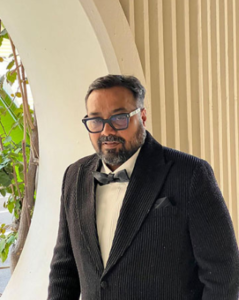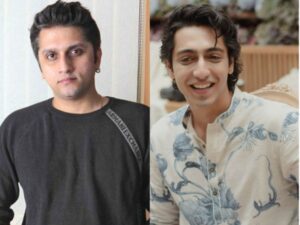When Naushad’s parents introduced him to his bride’s family as tailor!
New Delhi, Jul 14 (PTI) Back in the 1940s, the Hindi film industry was considered such a low profession to be in that music director Naushad’s parents introduced him to his would-be-bride’s family as a tailor, says a new book on interesting facts about cinema.
“Ironically, the music that played at Naushad’s wedding was from the 1944 film ‘Rattan’. The music was composed by Naushad,” writes Swayam Ganguly in “Chambers Book of Cinema Facts”, published by Hachette India.
The book has intriguing anecdotes and behind-the-scenes insights that illuminate the creative processes behind some of the most iconic films from the US, Europe, Africa, Asia, including India and beyond.
It highlights several facts about the star-studded world of legendary actors, directors, mellifluous voices, writers, music maestros, critically acclaimed performances, prestigious cinematic awards, behind-the-screen geniuses and passionate innovators.
The major milestones are covered in the special sections on Hollywood, Bollywood, regional Indian and world cinema.
According to the book, the Indian movie that features the most songs is “Indrasabha” (1932), which has a mind-boggling 71 songs. The music was composed by Nagardas Nayak.
The song “Ab Tumhare Hawale Watan Saathiyo” in the 2004 Bollywood movie of the same name is the longest Hindi film song. The duration of the song is 20 minutes, and it is featured in three installments in the movie.
Two of Raj Kapoor’s films “Sangam” (1964) and “Mera Naam Joker” (1970) are the only two Bollywood movies to have two intervals, both with a runtime of almost four hours, the book says.
“Sangam” was also the first Hindi movie to have not one, but two intervals during its screening.
The longest Bollywood films to run in theatres with run times of 255 minutes each are Raj Kapoor’s “Mera Naam Joker” (1970, original cut) and JP Dutta’s war movie “LOC: Kargil” (2003).
There is an anecdote titled “When Mohammed met Muhammad” which mentions how Mohammed Rafi on a visit to Chicago on a musical tour requested the organisers to arrange an appointment with boxing great Muhammad Ali.
“Rafi was a big fan of the legendary boxer, who normally didn’t meet people. But when he heard how legendary Rafi was in India, Ali agreed and came all the way to Rafi’s hotel,” the book says.
The author says world cinema is a more pluralistic outlook towards the art of cinema, where audiences are exposed to movies from around the globe. “This has especially gained momentum with the advent of technological support, making global content more accessible to people.”
Ganguly also writes that European cinema has been at the helm of artistic and experimental filmmaking, thanks to film movements like the French New Wave, Italian Neorealism, German Expressionism, and the Danish Dogme 95.
European cinema has also shaped the language and grammar of filmmaking with the invention of jump cuts, non-linear narratives, and handheld camera techniques, he argues.
On Hollywood, Ganguly says, “Before World War I, Italian cinema was the most popular source of entertainment. But after the war, Europe was so devastated that it took time to recuperate. Hollywood quickly became the new epicenter of cinema as the Americans took the baton from the Italians.”






